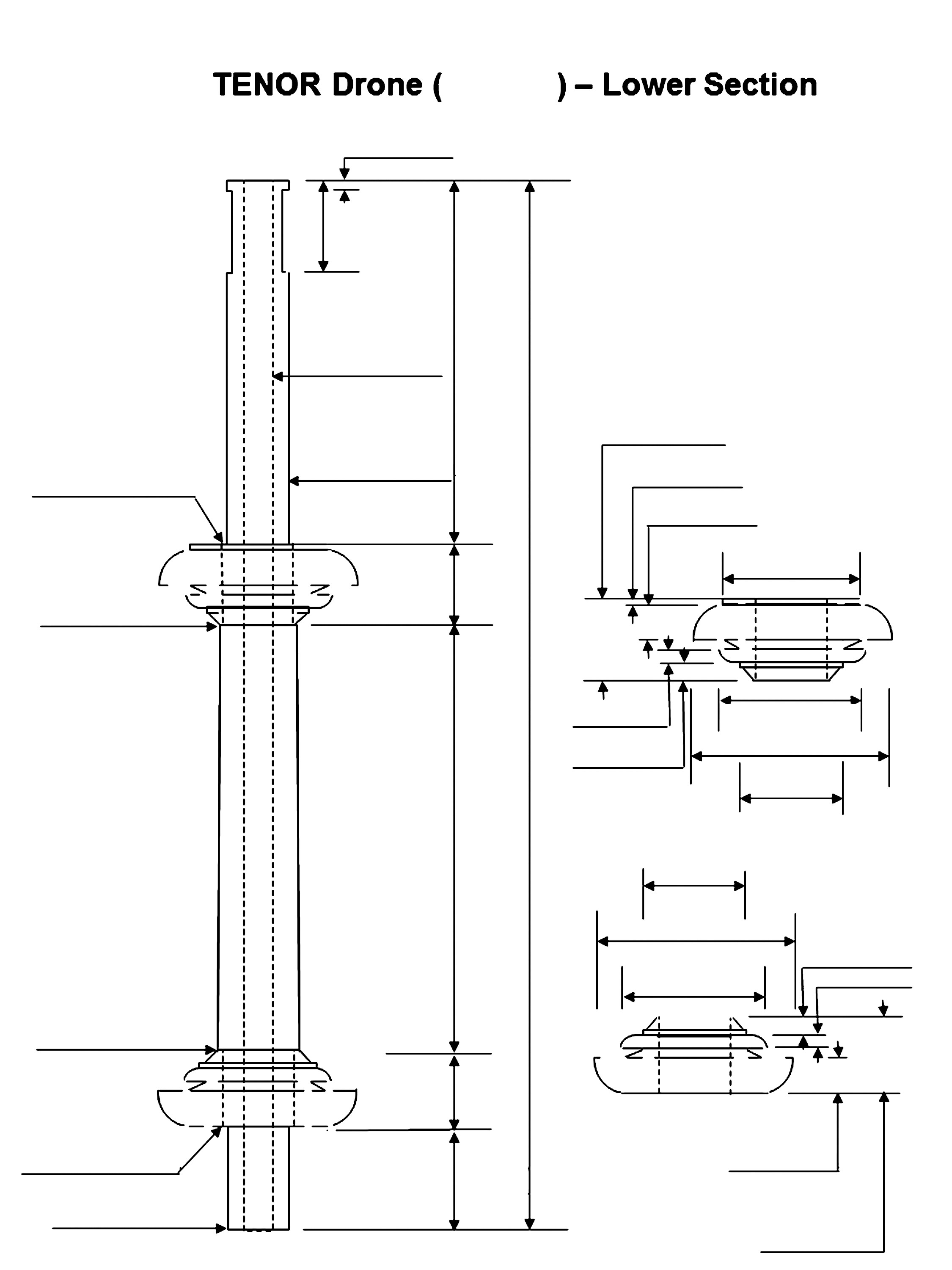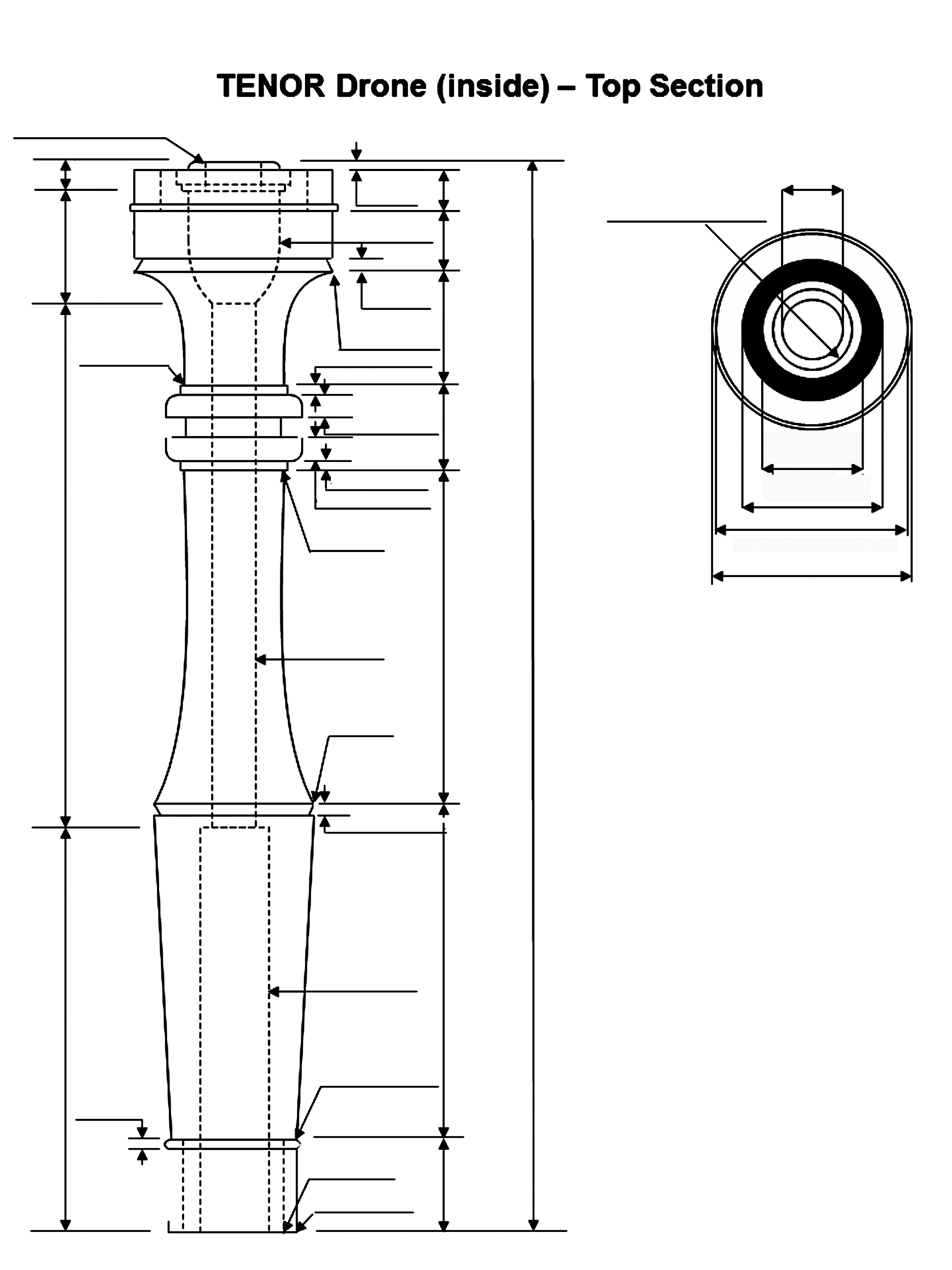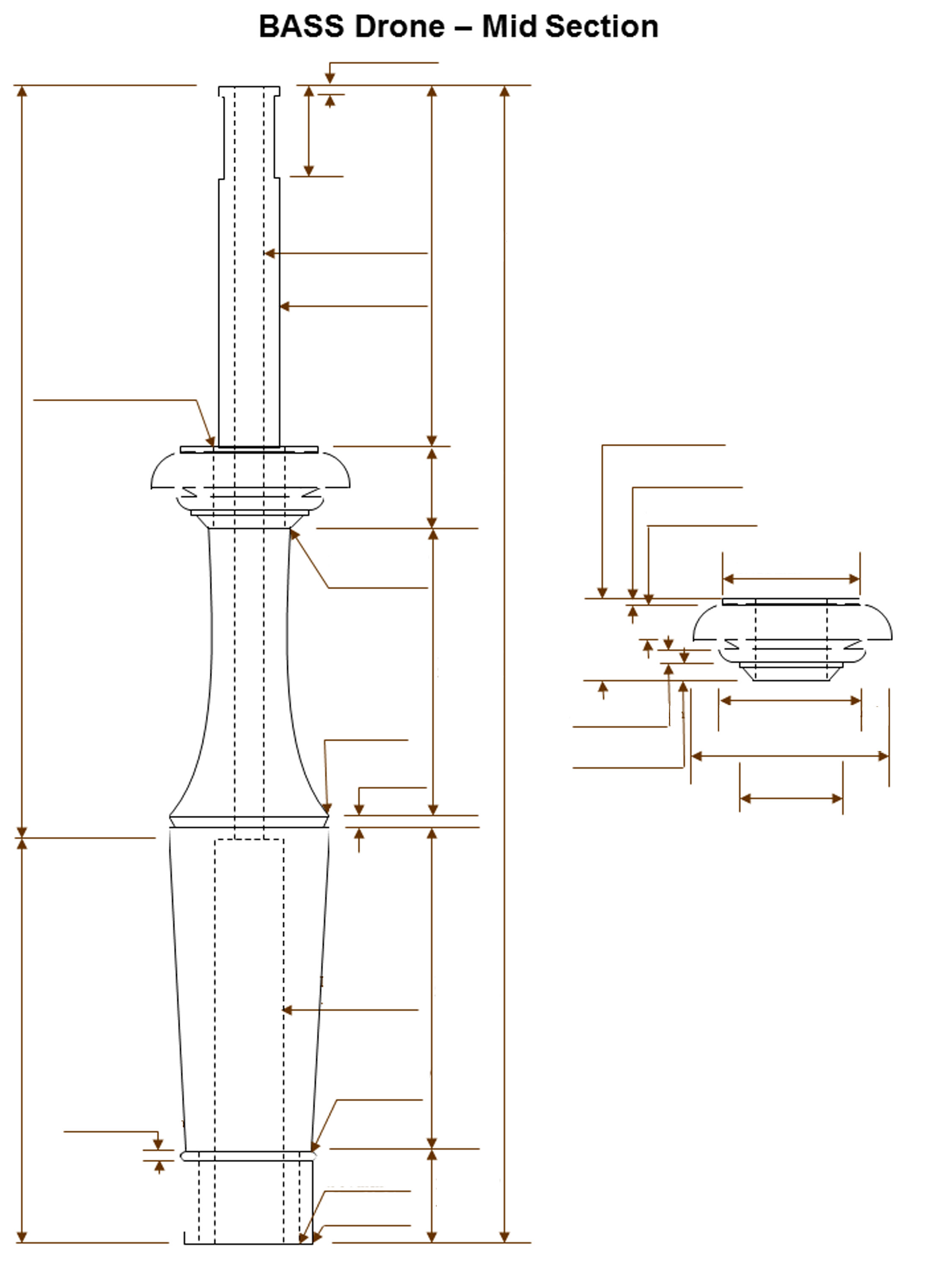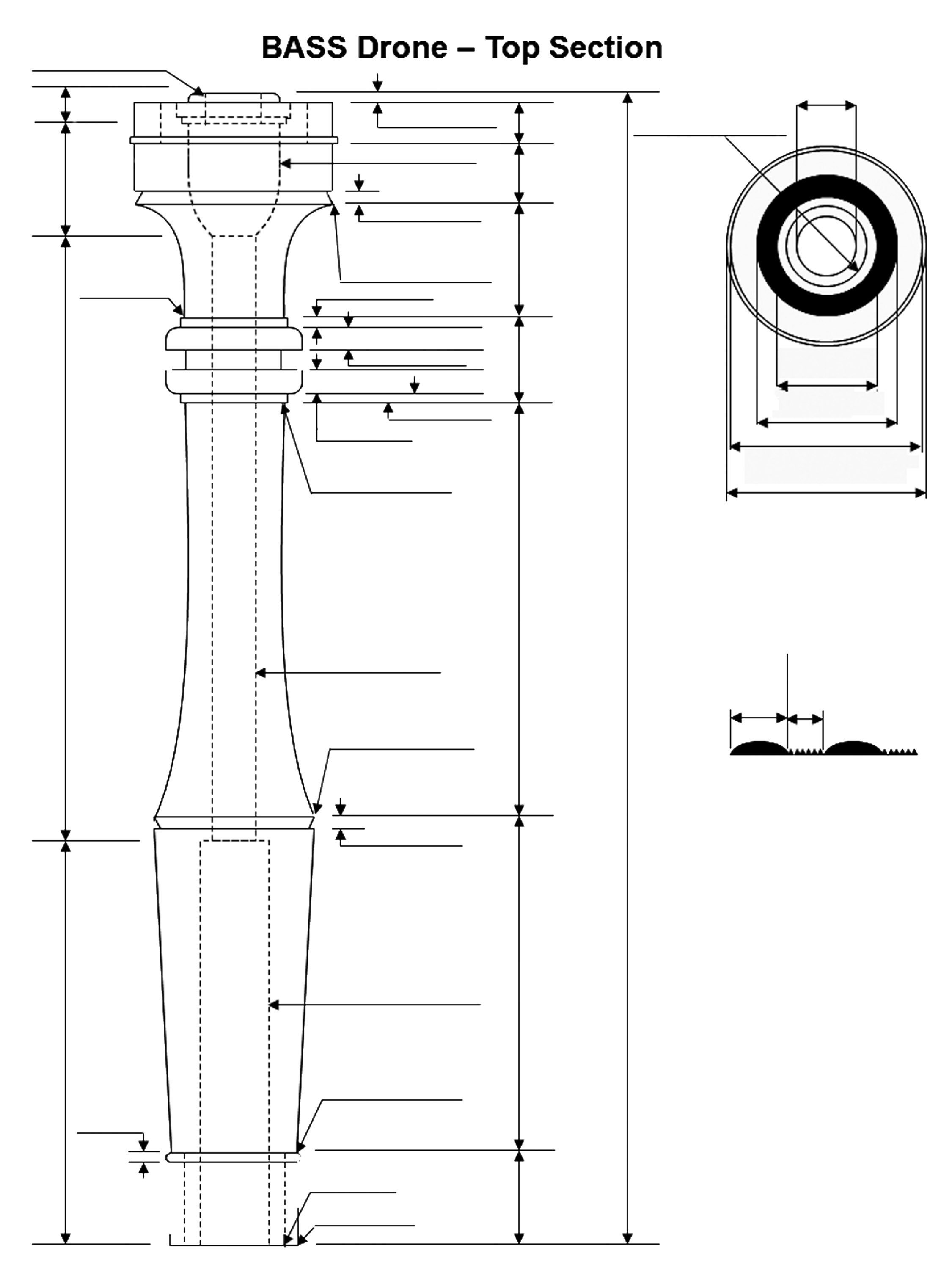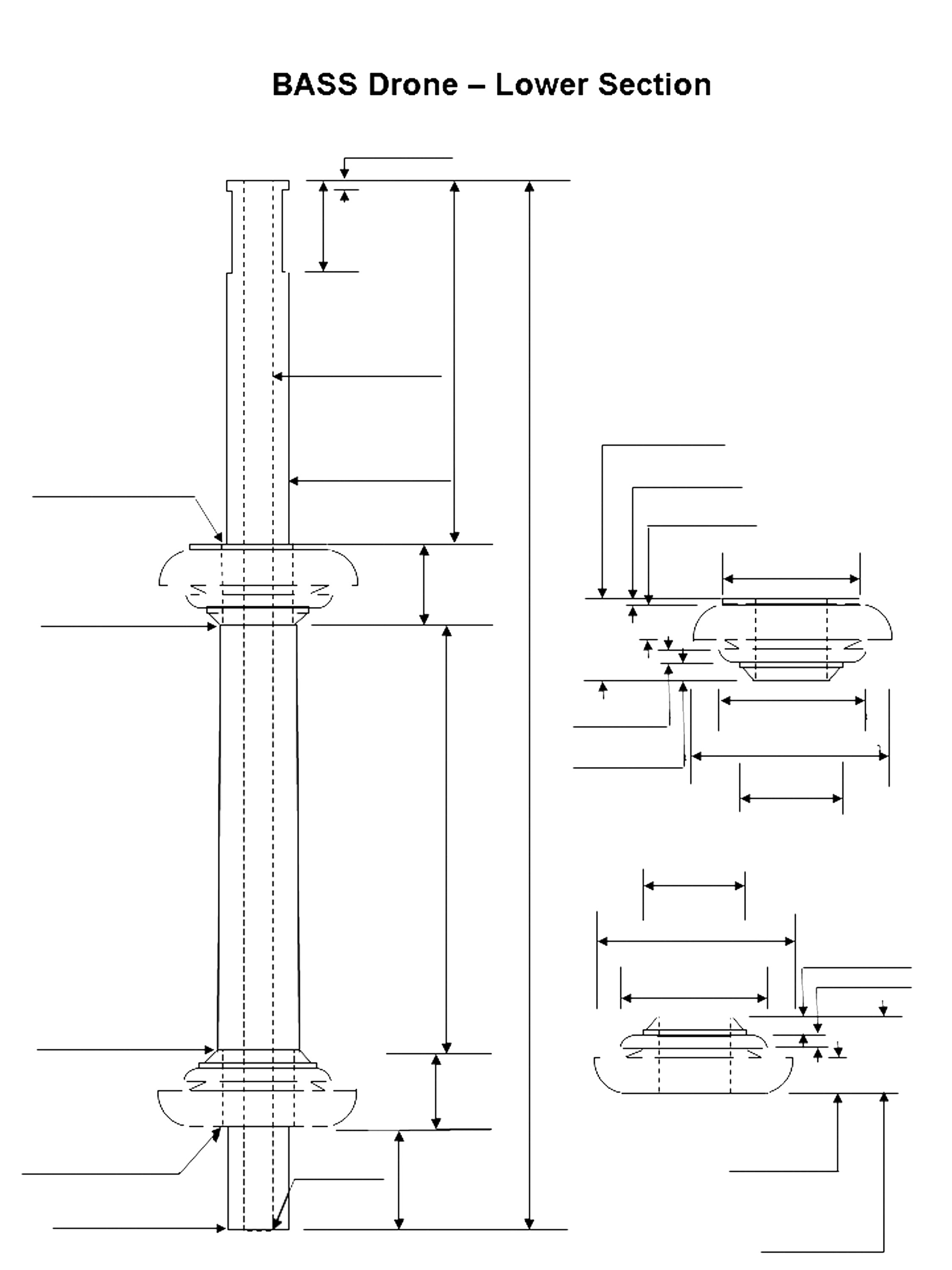Did you ever wonder why some bagpipes tune low or high on the tuning pin? Did you ever wonder why some drones seem problematic and are difficult to set up? Did you ever wonder why some drones won't remain steady during playing? Did you ever wonder why some bagpipes seem to take more air than others?
You probably thought these were "piper problems" rather than "bagpipe problems". Not necessarily so! The specifications of some bagpipes are radically different than those of bagpipes known to be superior (old Henderson and Lawrie drones, just as an example).
You probably thought these were "piper problems" rather than "bagpipe problems". Not necessarily so! The specifications of some bagpipes are radically different than those of bagpipes known to be superior (old Henderson and Lawrie drones, just as an example).
The image above shows the various parts of a tenor top. They all work in concert (along with the stock, reed, and tenor bottom section) to produce the sound and behavior that you experience on your shoulder. These measurements are general and it is possible to find measurements both over and under from Henderson to Henderson or from Lawrie to Lawrie. This is perhaps due to shrinkage in wood over the years, differences in tooling (both deliberate and accidental) by the maker, or it may be that the set was re-worked by someone years later. Personally, I am not bothered by small differences however greater differences set me to wondering.
An undersized bore will produce a quieter sound and a flatter sound. An old test is to slide a # 2 pencil into the bottom bore. It should go in easily without being sloppy. If the bore is too small to accommodate the pencil, chances are this is part of the problem. Now don't go forcing pencils into your bagpipes and then tell the repair person that Ringo said to do it! If the pencil doesn't slide in, you have an undersized bore (relative to Henderson).
Another quick test is to measure the depth of the tuning chamber. If it's deeper than 3 1/8 inches, this too could be causing the drone to tune low. Of course, it might be other things at play, however generally when I encounter a low tuning drone I find these to conditions present.
So just in quick review, you have the air supply, stock, reed, reed seat, bottom section, tuning chamber, small bore, bell, and bushing all working to determine how the bagpipe is going to sound and behave. Of course, the bass drone is much more complex as you're working with different sizing and an addtional section with both tuning chamber and small bore. By the way, this mid-section small bore is absolutely critical to the bass being deep and resonant. Too small and you're just not going to have that deep rich sound.
None of this is said to be critical of any particular bagpipe. It's provided here to help you understand why you may be encountering problems from bagpipe to bagpipe. Usually there are one or two people in every band that likes to tinker and they usually get the responsibility to help other set up their reeds and bagpipes. This is what they deal with. The bottom line is that you can't make a silk purse out of a sow's ear. Some bagpipes will not respond to typical adjustments and should best be turned over for something more playable, in my opinion. Although some bagpipes can be reworked, there are no guarantees. When you read this (click here) you'll understand why! There are just too many variables to manage. Again, it's unrealistic to think that your VW will perform like a Porsche just by dropping in a new motor. There's a whole lot more going on!
An undersized bore will produce a quieter sound and a flatter sound. An old test is to slide a # 2 pencil into the bottom bore. It should go in easily without being sloppy. If the bore is too small to accommodate the pencil, chances are this is part of the problem. Now don't go forcing pencils into your bagpipes and then tell the repair person that Ringo said to do it! If the pencil doesn't slide in, you have an undersized bore (relative to Henderson).
Another quick test is to measure the depth of the tuning chamber. If it's deeper than 3 1/8 inches, this too could be causing the drone to tune low. Of course, it might be other things at play, however generally when I encounter a low tuning drone I find these to conditions present.
So just in quick review, you have the air supply, stock, reed, reed seat, bottom section, tuning chamber, small bore, bell, and bushing all working to determine how the bagpipe is going to sound and behave. Of course, the bass drone is much more complex as you're working with different sizing and an addtional section with both tuning chamber and small bore. By the way, this mid-section small bore is absolutely critical to the bass being deep and resonant. Too small and you're just not going to have that deep rich sound.
None of this is said to be critical of any particular bagpipe. It's provided here to help you understand why you may be encountering problems from bagpipe to bagpipe. Usually there are one or two people in every band that likes to tinker and they usually get the responsibility to help other set up their reeds and bagpipes. This is what they deal with. The bottom line is that you can't make a silk purse out of a sow's ear. Some bagpipes will not respond to typical adjustments and should best be turned over for something more playable, in my opinion. Although some bagpipes can be reworked, there are no guarantees. When you read this (click here) you'll understand why! There are just too many variables to manage. Again, it's unrealistic to think that your VW will perform like a Porsche just by dropping in a new motor. There's a whole lot more going on!
When I'm working with a particular bagpipe, I like to start out with my own set of reeds. Carbon Fiber reeds are arguably the most stable of all reeds and mine are set-up for a Henderson bore bagpipe. I can pop these into any bagpipe and almost immediately tell you what I'm working with (sound and behavior).
Let's say that the bagpipe seems to take too much air. I usually start by corking the stocks and checking the bag. If the bag is airtight, I measure the bushings. Excessively large bushings will not only have an impact on the sound but they will also make the drone less air-efficient. Even small differences in size make significant differences in performance.
Let's say that the bagpipe seems to take too much air. I usually start by corking the stocks and checking the bag. If the bag is airtight, I measure the bushings. Excessively large bushings will not only have an impact on the sound but they will also make the drone less air-efficient. Even small differences in size make significant differences in performance.
Inside your Drones
